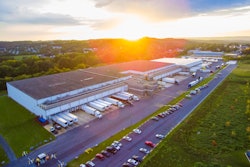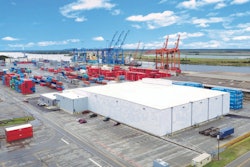
When customers come into your stores with menus in mind or shopping lists in hand, empty shelves are the last thing they want to see.
In today’s unpredictable market, customer-facing inventory management is a mix of art and science, a balance between maximizing the productivity of shelf space and meeting shopper needs.
And when your shoppers can order groceries online and get same-day delivery, a focus on financial productivity isn’t enough. Yes, grocers have to rationalize space, just as retailers across the board are doing. And you’re constantly faced with the challenge of balancing ROI on your inventory investment, while also minimizing waste.
But with stiff competition for your customers’ wallets, not just from brick-and-mortar grocers but from their online channels as well as mega-marketplaces like Amazon, your inventory management and space planning strategies have got to be made with an understanding of your customer. You have to take into account the ways those decisions could impact shopper loyalty.
Knowing how your customers are shopping means having as much good quality data as possible so that your predictions hold water. When traffic to your stores increases beyond what historical trends can track, driving higher demand, your ability to accurately predict your inventory and fulfillment needs changes. Remember, the longer the time horizon between gathering and incorporating data, the more your strategies become reactive instead of predictive. In today’s fast-evolving retail world, grocers cannot afford to rely on manual processes or intuition. Data science, especially the ability to collect and analyze shopping data, will be table stakes for grocers that want to stay profitable and competitive.
Meanwhile, as new fulfillment options like click and collect or home delivery gain wider adoption and acceptance, you’ll be challenged to rethink your inventory strategy. Grocers that move toward a more centralized inventory model, reducing the levels held in local stores, impacts your speed to market and your delivery times. Grocers that aren’t willing to trade a higher chance of empty shelves in stores for the ability to meet rapid fulfillment demands in other channels will need as much visibility into demand as possible.
So, how often are you recalibrating your existing forecasting models? How much emphasis are you putting on customer loyalty and satisfaction when you consider inventory levels? And are you making the most of today’s predictive analytics capabilities to help you avoid empty shelves and customer dissatisfaction?
Because at the end of the day, the customer is king. And aside from having an engaging in-store customer experience and the best visual presentation on your shelves, it’s important to consider the impact on your business that an empty shelf space might have.
Yes, margins remain tight in grocery, but losing momentum with your loyal shoppers could be the push they need to move away from in-store shopping and try out a different fulfillment option. If your brand relies on in-store experience as a differentiator, you need to consider the impact that those changes in channel preference could have.
With the macro changes that retail is undergoing, it’s vital that you balance not just inventory productivity and waste, but the customer experience—and change your forecasting expectations to incorporate those shifting demand cycles. That will make it easier to keep your shelves filled, your inventory in the best place—and your customers happy and loyal.
JoAnn Martin is vice president of retail industry strategy at JDA Software. A veteran of the retail space, Martin analyzes trends impacting softlines, fast-moving consumer goods and other sectors of the retail market, discovering ways that technology creates efficiency and enhances the customer experience.




















